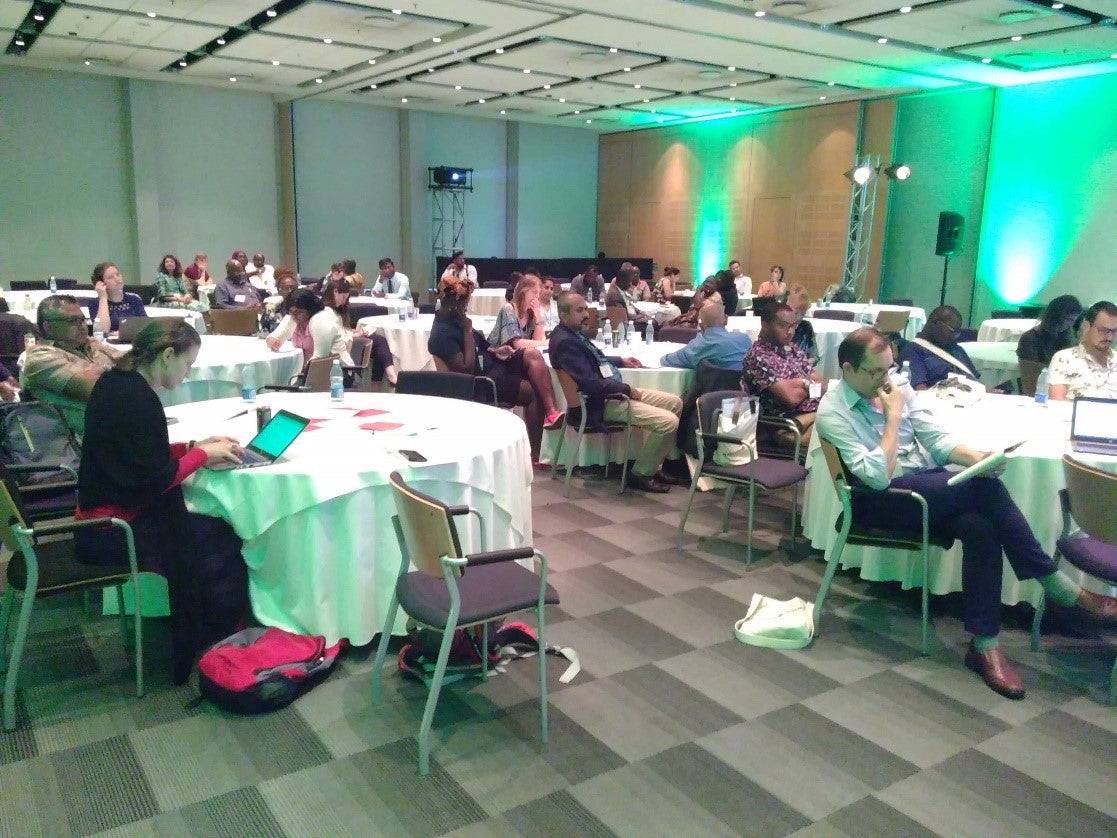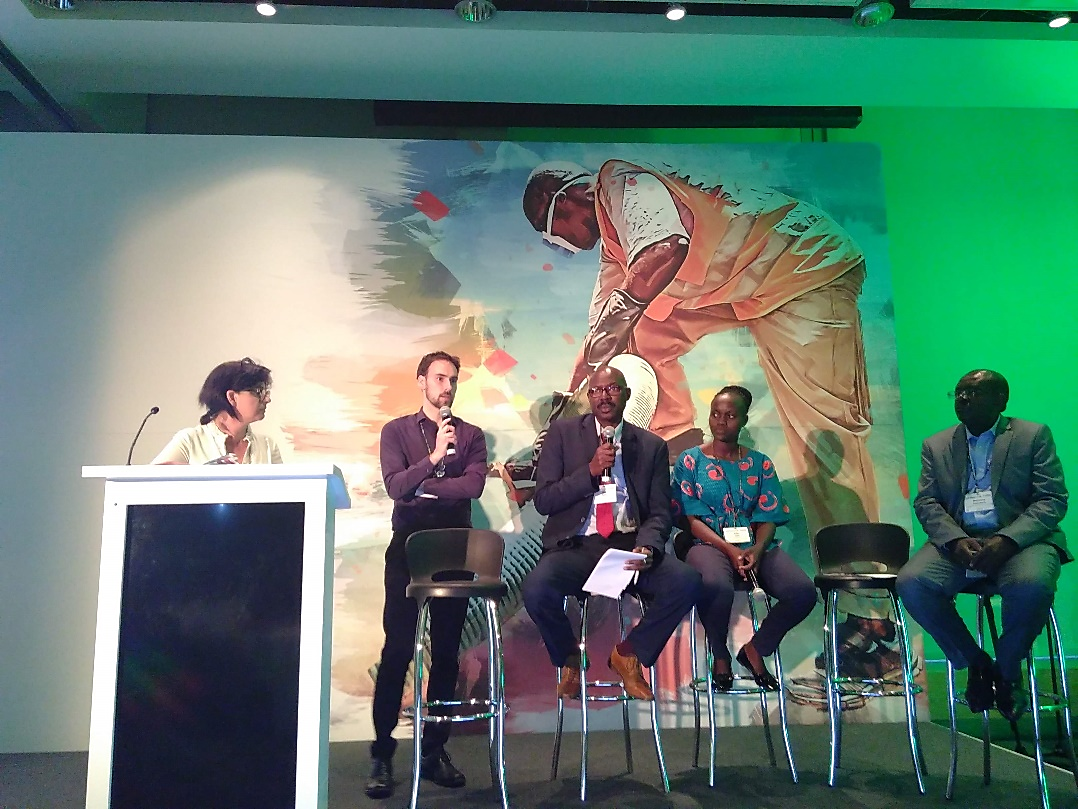 Bikash, a 28-year old man from Kushtia, Bangladesh
Bikash, a 28-year old man from Kushtia, Bangladesh
Bikash, a 28-year old man from Kushtia, Bangladesh, had to drop out of school and give up his passion for cricket to become a sanitation worker and support his family. Part of the Methor community, he performs tasks such as emptying pits and cleaning septic tanks. In his job, he has witnessed several accidents but managed to stay safe himself, despite a lack of safety gear or training. His ingenuity has helped: he would use sunlight and a matchstick to identify the presence of poisonous gases in septic tanks. His working conditions have gradually improved since the introduction of vacutugs and wider efforts from the municipality and SNV [1] .
Sanitation was one of the most off-track Millennium Development Goals (MDGs). In 2015, 2.3 billion people around the world still lacked access to basic sanitation (a decent toilet at home). The Sustainable Development Goals (SDGs) have raised the bar and the target is now to have access to ‘safely-managed’ sanitation for all by 2030. That means reaching 4.5 billion people with safely-managed sanitation services, in which excreta is properly transported (via sewers or pit emptying services) and appropriately treated, so that it can be reused or disposed of safely. National governments and municipal authorities, with the support of development partners, are stepping up their efforts in this direction. Nonetheless, those collective efforts to improve the health and well-being of people around the world need to be mindful of a blind spot that remains in the sanitation service chain: the working conditions of sanitation workers.
As was the case for Bikash, sanitation workers often suffer terrible working conditions and are generally taken for granted in sanitation programs. Yet, without them, the sanitation service chain can’t function. Recurrent news items about sewer deaths and asphyxiation in septic tanks are treated as isolated incidents rather than as part of a structural problem requiring a systematic solution. Dignified, safe and formalized conditions will be critical for attracting and retaining sanitation workers and for ensuring safe services for customers. In fact, a very substantial increase in the workforce will be needed to achieve the SDG ambitions – and this workforce should benefit from such dignified, safe and formal working conditions.
The World Health Organization (WHO) Guidelines on Sanitation and Health, which endorse safe sanitation systems and practices in order to promote health, provide a specific recommendation regarding sanitation workers: “Sanitation workers should be protected from occupational exposure through adequate health and safety measures”. This recognizes the high occupational health risks that sanitation workers face when handling fecal sludge and wastewater and while working in confined spaces, which can lead to their exposure to numerous diseases as well as to hazardous gases and chemicals, cuts, abrasions and other injuries.
It is not just their labor rights that are not respected, but also their dignity, since they often face stigma and discrimination. Sanitation workers remain invisible to many and there are limited efforts to understand their challenges or to develop and document good practices, approaches, policies, standards and regulations in order to help improve their working conditions.
On February 22, 2019, WaterAid, SNV, WHO, the International Labour Organization (ILO), the Water Research Commission of South Africa and the World Bank organized a workshop, entitled “The Missing Link in the Sanitation Chain: Improving the Conditions of Sanitation Workers” at the fifth International Fecal Sludge Management Conference (FSM5) in Cape Town.
The World Bank presented the preliminary results of a global review on the conditions of sanitation workers which they are undertaking with WaterAid, WHO and ILO, while SNV shared occupational health and safety (OHS) data from 16 cities. Case studies from Bangladesh, Burkina Faso, Ethiopia, Tanzania, Zambia and South Africa were discussed in a ‘World Café’ setting. You can get a flavor of these presentations and cases from the slides.
Subsequently, participants discussed in groups the challenges that sanitation workers face and recommendations to improve their conditions. Highlights from the discussion include:
· While there is some level of awareness about the need to use personal protective equipment, unsafe practices are still widespread. Protocols around accidents and provisions for cleanliness tend to be neglected.
· Factors influencing OHS also include pressure by households or employers to engage in unsafe activities in order to “do a thorough job”.
· Unsafe working conditions are common both for manual emptiers and mechanical emptiers of septic tanks and pit latrines, as well as for companies providing maintenance to sewers, pumping stations and wastewater treatment works, where the training of workers is often insufficient or non-existent.
The closing panel included representatives from a Zambian utility, the Pan-African Emptiers Association, the Container-Based Sanitation Alliance, WHO and ILO. Among other things, it highlighted the need for empowerment of sanitation workers and coined the phrase “recognize, formalize, organize”.
In summary, the workshop was an important step to bring together actors involved in the sanitation chain from many different perspectives, and to start identifying and filling some key knowledge gaps. It also helped identify some initial actions needed to start raising awareness and advocating for the health, safety, dignity and rights of sanitation workers. It was agreed, for example, that, beyond advocacy, future steps in any such joint efforts should include the development of standards, working protocols, training and enforcement mechanisms.
The conveners and participants of the workshop are committed to taking this crucial agenda forward. Please join the conversation online via #SanitationWorkers, #StopKillingUs, #InclusiveSanitation and help us eliminate this terrible blind spot from the sanitation sector so that, together, we ensure that achieving the SDGs does not come at the expense of the health, safety and dignity of those who will make them a reality.
[1] SNV (2017). City Cleaners - Stories of Those Left Behind.






Join the Conversation